Reading the Same Paragraph Again Trex Meme
A literary device is a technique a author uses to convey ideas and messages to their readers. That means that as readers, we demand to understand and use literary devices to fully empathize a work's major themes! Today, we're going to take a closer wait at how to use imagery to analyze a text. Nosotros'll start past giving you the imagery definition before talking about why information technology's an important tool for analyzing a text. Then we'll walk y'all through some imagery examples in poetry and fiction and prove you exactly how to clarify the imagery in each. By the end of this article, you'll be able to talk about imagery in literature like a pro, and then let'due south get started. Accept you always read a book that makes you feel similar yous're seeing, feeling, smelling, or tasting the same thing every bit the character you're reading about? (We had that experience the first time Harry Potter tries butterbeer in Hogsmeade.) If y'all have, you can thank imagery for that experience! Imagery is the act of using language to create images in the reader's mind. Writers use descriptive words and phrases to aid the reader feel similar they're...well, wherever the writer wants them to be! Basically, the writer is trying to create a "mental paradigm" for the reader through the words they choose. Hither's how i of the greatest horror writers of all time, Stephen Rex, describes imagery: Imagery does not occur on the writer's page; it occurs in the reader's listen. To describe everything is to supply a photo in words; to indicate the points which seem the most vivid and of import to you, the writer, is to permit the reader to flesh out your sketch into a portrait. In other words: you tin can call back of imagery as painting with words in guild to fuel the reader'south imagination! An like shooting fish in a barrel way to spot imagery in a text is to pay attention to words, phrases, and sentences that connect with your five senses (sight, smell, taste, affect, and sound). That's because writers know that in society to capture a reader's attention, they need to engage with them mentally, physically, and emotionally. Since imagery is designed to connect a reader to a text, information technology's i of the nigh powerful tools a writer has to communicate their themes and messages. Any fourth dimension a author engages a reader'south senses, they're using imagery...which means imagery is a actually wide literary device. In general, withal, imagery fits into two big categories: literal and figurative. With literal imagery, a author is literally describing things to the reader. (Pretty straightforward, huh?) Writers frequently utilise literal imagery to describe the setting, characters, and situation for a reader. Literal imagery helps the reader pic where characters are, empathise what characters are doing, and even foreshadow what might happen side by side. (For example, if the character is in a dark, dirty alley, they're probably in a more dangerous situation than if the character is skipping through a field of daisies.) Let's have a expect at an example of literal imagery from Michael Crichton's Jurassic Park so you can meet what we mean. In this scene, Dr. Alan Grant, Lex Tater, and Tim Spud are trying to hide from a tyrannosaurus king: They were closer to the waterfall now, the roar much louder. The rocks became slippery, the path muddy. There was a abiding hanging mist. It was like moving through a cloud. The path seemed to lead right into the rushing water, but equally they came closer, they saw that information technology actually went behind the waterfall. The tyrannosaur was notwithstanding looking downstream, its back turned to them. They hurried along the path to the waterfall, and had near moved backside the canvas of falling h2o when Grant saw the tyrannosaur turn. And then they were completely behind the waterfall, and Grant was unable to run into out through the silver sheet. At present that you've read this passage, shut your eyes and motion picture the scene. Y'all're probably picturing a giant waterfall, a hungry tyrannosaurus rex, and a lot of danger, right? That's considering the literal imagery in this passage paints a very specific, literal moving picture that helps you imagine what'due south happening in this moment! Magic, right? Not quite. Imagery works because the writer uses descriptive words and phrases to help paint a picture. Allow's take a look at the first few lines once more and pick out some of the descriptive language that helps shape the scene: They were closer to the waterfall now, the roar much louder. The rocks became slippery, the path dingy. At that place was a constant hanging mist. Information technology was like moving through a deject. These lines are almost exclusively description, and Crichton uses phrases like "rocks became slippery" and "constant hanging mist" to assistance you imagine exactly what'southward happening. A good way to pick out literal imagery is to await for nouns, then come across how they're described. For instance, the noun "waterfall" is described as having a "roar" that gets "louder" the closer the characters get! From an analysis perspective, these literal images all work together to aid build the mood , or tone , of the scene. In this case, the imagery of the scene contributes to its tense and suspenseful tone. The surround is treacherous--not only are the rocks slick, but the characters have trouble seeing through the mist and h2o. One imitation motility, and they'll be a tasty snack for a hungry dinosaur! Use this picture as inspiration for finding connotation! (This will all brand sense in a second.) Unlike literal imagery, figurative imagery uses on the non-literal--or metaphorical--meaning of words to paint a picture for the reader. Almost all words have two meanings: their denotation and connotation. The denotation of a word is its literal, dictionary definition. Figurative imagery, on the other hand, relies on the connotation —or implied pregnant—of words and phrases to help shape a text's themes and ideas. To see how figurative imagery works, allow's look at the commencement line of Shakespeare's "Sonnet 130," where the speaker is describing his lady dear: My mistress' eyes are nothing like the sun; Okay. Let's zilch in on the discussion "sun" here. According to Merriam-Webster, the literal definition of the discussion "sun" is "the luminous angelic trunk around which the earth and other planets circumduct, from which they receive heat and calorie-free, which is equanimous mainly of hydrogen and helium." But the speaker doesn't literally mean that his mistress' eyes aren't like a brawl of gas! So what does he mean? To figure this out, permit's await at the figurative imagery here. Take a minute and call back of some of the implied or metaphorical meanings of the discussion "sun." The word might make you retrieve of warmth and happiness. Information technology likewise might make y'all recall of other images like burning, blazing, or peppery brightness. With this figurative imagery in listen, this line is amend read equally "my mistress'south optics aren't brilliant, warm, or happy." Not only does figurative imagery help this line make more sense, it also clues readers into the message of the poem: that you tin recognize someone'due south faults and still love them and notice them cute. One more quick notation: because you're a savvy reader, yous've probably realized that this line from Shakespeare is too a metaphor , which is a comparison betwixt 2 seemingly unrelated objects (in this case, "eyes" and "sun"). Writers frequently use other literary devices like metaphor, simile, and personification to assist create vivid imagery for the reader. So don't be surprised if you run across imagery overlapping with other literary techniques! Absolutely! In fact, it's quite common to see writers use literal and figurative imagery simultaneously. Take the first stanza of William Wordsworth's poem, "Daffodils": I wandered lone as a cloud That floats on high o'er vales and hills, This stanza combines literal and figurative imagery. Literally, the images in this stanza aid u.s. see the speaker wandering effectually solitary until he stumbles upon a patch of daffodils that are growing by a lake. This imagery is important to agreement Wordsworth's poetry, which often explores the human relationship between nature and homo. The figurative imagery helps united states learn a lilliputian more nearly the speaker, who's an outsider. We can infer this because of the imagery he gives u.s.; he imagines himself as a cloud floating over everything, able to see what's going on but unable to participate. The daffodils, on the other hand, represent society. The imagery here is happy (the daffodils are "aureate" and "dancing"), which is how the speaker views guild as someone on the outside looking in. Now that you know more virtually imagery, allow's look at a poem that uses imagery to portray its major themes: "'Hope' is the thing with feathers - That perches in the soul - And sweetest - in the Gale - is heard - I've heard information technology in the chillest land - Imagery tin can brand something abstruse, like an emotion or theory, seem more physical and tangible to the reader. By using imagery, writers tin evoke the feeling they desire to talk about in their readers...and past making their readers feel, writers can also help readers connect to the letters in their work. In this example, Emily Dickinson takes the abstruse idea of "hope" and compares it to a bird. Dickinson paints images of hope doing notwithstanding things a bird does: it "perches," "sings," and keeps "so many warm" with its feathers. And despite all these gifts, hope never "asked a nibble" of anything in return. By using imagery to accept an abstract idea (hope) and brand it concrete (a bird), Dickinson helps readers understand the nature of hope. For Dickinson, hope is something that costs little to accept and notwithstanding offers us condolement in all of life's toughest situations. Imagery tin be an every bit powerful tool for fiction writers, too. In Dracula, Bram Stoker uses imagery to drive home the horror of the novel. Permit'due south take a look at i particularly stand-out scene, where Arthur Holmwood has to kill his one-time fiancee, Lucy Westenra, who has been turned into a vampire: The Thing in the coffin writhed; and a hideous, blood-curdling screech came from the opened cherry lips. The body shook and quivered and twisted in wild contortions; the precipitous white teeth champed together till the lips were cutting, and the oral fissure was smeared with a blood-red foam. Simply Arthur never faltered. He looked similar a figure of Thor equally his untrembling arm rose and fell, driving deeper and deeper the mercy-bearing stake, whilst the blood from the pierced heart welled and spurted up around information technology. His face was set up, and loftier duty seemed to shine through it; the sight of it gave us courage, so that our voices seemed to band through the little vault. Recollect how we talked about how imagery tin set up a tone or mood? That'south certainly the case here. Lucy is visually described not as a adult female only as a "affair," and the "blood-curdling screech" she lets out is a bang-up example of how auditory imagery--or the sound of a scene--can contribute to its overall effect. (In this example, it amps upwardly the horror of a in one case-delicate Englishwoman beingness transformed into a bloodthirsty animate being.) Information technology'southward the imagery associated with Lucy that shows readers how vicious and animalistic she's become, which is no surprise: she'due south joined Dracula's army of the undead. Now, have a look at the imagery surrounding Arthur, Lucy'south former fiancee, and see how it compares to Lucy's description. Even as he's killing Lucy, Arthur is described as "a effigy of Thor"--meaning he's strong, heroic, and adept with a hammer. Stoker specifically says Arthur is "untrembling" in his task; despite its grisly nature, his steadiness showcases his delivery to protecting his state from the vampire threat...even when it means driving a stake in his lover's heart. Additionally, his face has the "shine" of duty, which is a nod to the glowing, celestial halos of angels. Arthur's bravery and light stands in contrast to Lucy'south night, demonic nature, and Stoker specifically uses imagery to show readers how skilful tin triumph over evil. These examples take shown you how to find and clarify imagery, but you'll have to do this all by yourself when you take the AP Literature examination. Simply don't worry--at present that you're an expert, finding and analyzing imagery volition be a breeze! Simply just in case you go stuck, here are 3 questions you tin ask yourself to help you better analyze imagery in literature and poetry. The hardest part virtually analyzing imagery is finding it in the commencement identify. Like we mentioned earlier, a expert way to do this is to look for nouns and search for words that describe them. Then y'all can showtime asking yourself if those descriptions are figurative imagery (i.e., do those words have any implied or metaphorical pregnant). But when y'all're crunched for time, y'all tin can go dorsum to the tried-and-true method of using your imagination. Which parts of the text fabricated you picture something in your mind? Since imagery is designed to spark your imagination, there's a neat gamble that section contains some sort of imagery! This question helps you get to the meat-and-potatoes of your assay actually quickly. In one case you find a piece of imagery, inquire yourself what it's showing you. It could exist describing an important setting, plot point, or character. Brand certain you're request yourself if there's figurative imagery at work, too. If you lot're struggling here, you tin can always become back to the "mental picture" we talked nearly with the first question. What practice you lot see in that epitome? There'southward a expert chance that whatsoever you're imagining matters in some way. Once you have that image in your mind, you can kickoff to ask yourself why that particular image is important. Here'south what we mean: think about the Jurassic Park example we talked about earlier. The imagery there tells us some literal things about what'due south happening in the scene, only information technology also adds to the danger and suspense of the master characters' predicament. The same tin can be said for the excerpt from "Daffodils," only instead of revealing a plot point, the imagery gives readers important insight into the narrator of the poem. Once yous observe a practiced piece of imagery, ask yourself how it makes you experience. Is information technology hopeful? Scary? Depressed? Angry? The feelings associated with the imagery in a piece of work tin can often reveal the theme of a text. Have Emily Dickinson'due south poem. What feelings are associated with the imagery surrounding "promise"? Well, birds are tame and delicate, and the bird Dickinson describes sings sweetly through life'south tearing storms. Hope is clearly a reassuring, gentle, uplifting thing. By request yourself why Dickinson thinks hope is good, you can offset to figure out some of the messages of the verse form! Test out your new-plant imagery chops by analyzing a verse form on your ain! We recall that Dylan Thomas' "Practise non go gentle into that expert night" is a great place to offset. You can find the full text of the verse form, also as boosted analysis, hither. There's more to literary analysis than just knowing your way around imagery! Make sure you're familiar with the most important literary devices, like personification, before you caput into your AP examination. There are two parts to the AP Literature test: the multiple choice section and the essay section. Some students worry well-nigh the written portion of the examination then much that they forget to study for the multiple choice questions! Don't permit this exist your situation. Make sure you're preparing for the whole exam by reading through this guide to mastering the AP Literature exam's multiple pick portion, likewise.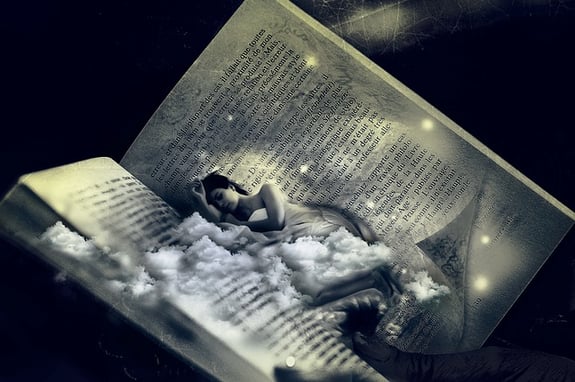
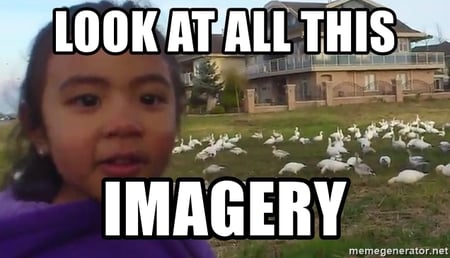 Seriously. Once you know what you're looking for, you'll see it everywhere!
Seriously. Once you know what you're looking for, you'll see it everywhere! What Is Imagery? Definition and Explanation
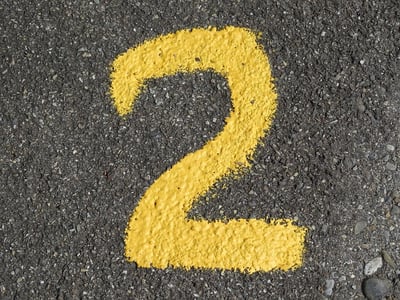
The 2 Types of Imagery
Literal Imagery: Examples and Explanation

Figurative Imagery: Examples and Explanation
Can an Instance of Imagery be Both Literal and Figurative at the Same Time?
When all at once I saw a crowd,
A host, of golden daffodils;
Beside the lake, beneath the copse,
Fluttering and dancing in the breeze.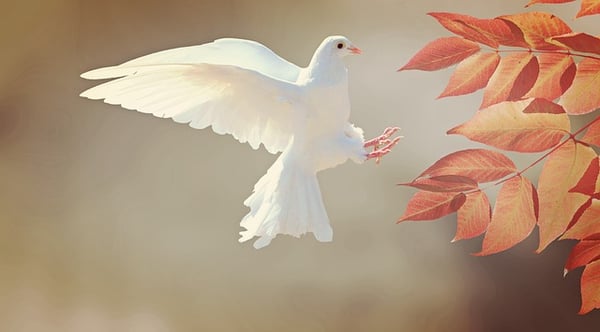
Imagery in Poesy: "Promise is the thing with feathers" by Emily Dickinson
And sings the tune without the words -
And never stops - at all -
And sore must be the storm -
That could abash the piffling Bird
That kept then many warm -
And on the strangest Sea -
However - never - in Extremity,
Information technology asked a crumb - of me.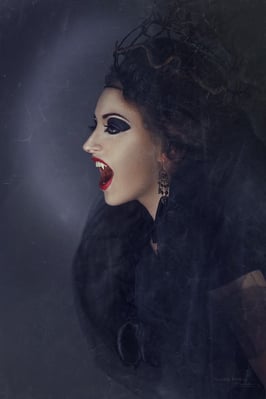
Imagery in Fiction: Dracula by Bram Stoker

3 Questions to Ask When Analyzing Imagery
Question 1: What Did I Imagine While I Was Reading?
Question 2: What Does the Imagery Reveal About the Situation?
Question iii: How Does the Imagery Touch on the Mood of the Text?
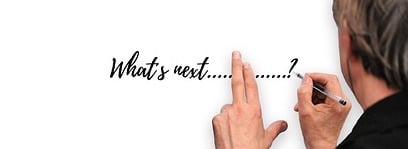
What'south Adjacent?

About the Author
Ashley Sufflé Robinson has a Ph.D. in 19th Century English Literature. As a content writer for PrepScholar, Ashley is passionate nigh giving college-jump students the in-depth information they need to get into the schoolhouse of their dreams.
Source: https://blog.prepscholar.com/what-is-imagery-definition-examples